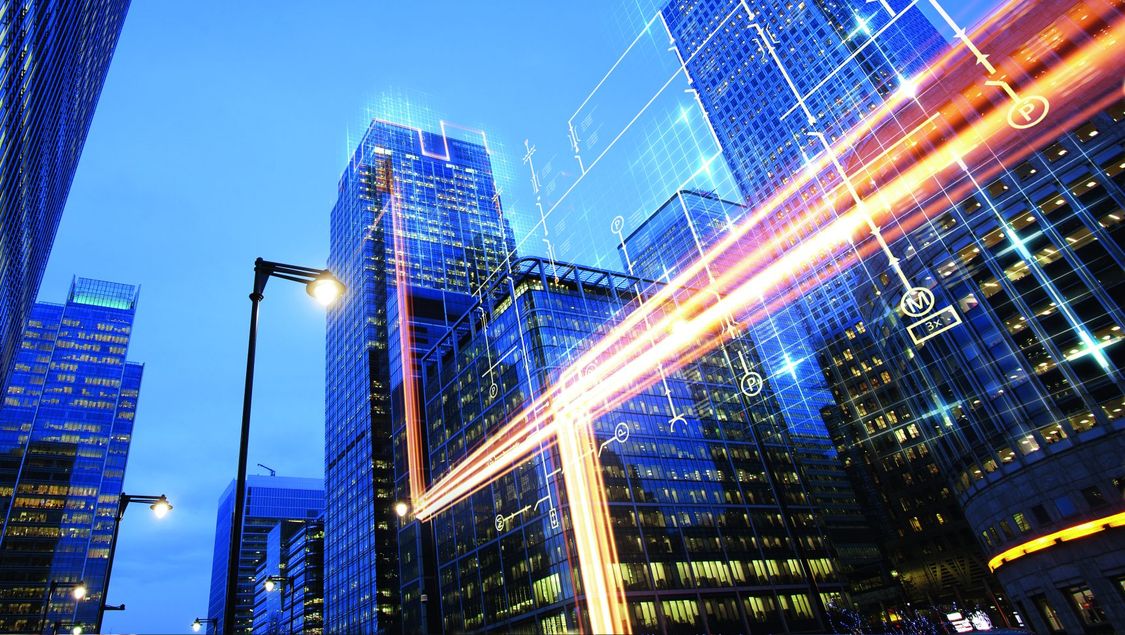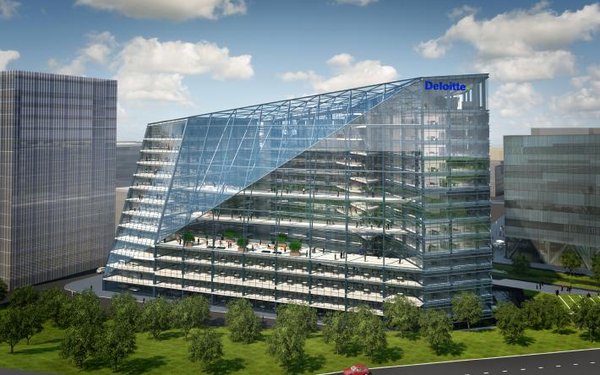
What is smart city?
From my point of view I see smart cities as a way to improve the quality of life and operational efficiency of local residents through information technology and communication systems. At the same time reduce the cost of living and resource consumption. A lot of data needs to be collected and analyzed to monitor the problems revealed in different areas. All devices and systems are interactive, so that citizens can have a smart living environment. Especially some smart buildings and devices. They can make the transportation and life of citizens more convenient and fast. It must serves the local community and citizens, bring us smart life experience.
How Smart Buildings and Infrastructure works?
The greenhouse gas and carbon emissions of modern buildings are substantial. Most of the emissions originate from air conditioning and some high-consumption equipment in buildings. This leads to a slow increase in global temperatures, also known as the greenhouse effect. In smart buildings there is a need to reduce and eliminate our negative impact on the environment. There is also a need for devices that can generate some energy by themselves. For example, photovoltaic power generation, which gets some energy from the sun for building use. This is what is now called green building. It can reduce pollution and maintain sustainability. We often see buildings with a lot of greenery in them. This allows the building to acquire a self-healing function. Efficient smart infrastructure should be built in a human-centered way. This will not only gain the acceptance of the citizens but also improve their quality of life. At the same time these buildings need to be interactive with people. Interaction can be done through some commands and actions. These buildings also have access to some data for analysis. thus enabling digital services and relative applications. With these early guarantees, smart buildings also need to be comfortable and secure. To improve efficient services while protecting the privacy of user data.

Smart building projects
1. Glumac, Shanghai
Objective
This project is a collaboration between Glumac, Gensler and Shimizu and is the first of its kind in Asia. In a city as densely populated as Shanghai and with the large amount of gas emissions it is extremely challenging to achieve net zero energy, net zero water and net zero carbon. To achieve a state-of-the-art sustainable building they selected a 100 year old three-story building for renovation. The building is located in Hagarjun Park, which has a very lush vegetation and quiet environment. This is a stark contrast to the urbanized environment.
To achieve net zero energy they applied four steps. The first improves the thermal performance of the walls and roof. The second designed the floor plan to accommodate sunlight. Daylight can enter the balcony space directly from windows and skylights. The third was to select low energy consumption equipment to reduce consumption. The fourth is to compensate for the remaining energy use by generating renewable energy. Also roof-mounted photovoltaic solar arrays can serve the same purpose. The rainfall in Shanghai is sufficient to meet the water needs of the office. Rainwater falls on the roof and is conveyed into the water tank by sloping red clay tiles. After treatment by a non-chemical filtration system it can be used for toilets and taps.
Glumac has a new open workspace and a nature-friendly atmosphere. It also has a green wall to prevent the infiltration of polluted city air. The advanced air purification system allows you to check the air quality at any time. All materials in the office are made from recycled materials. Like some tables and chairs. The office is LEED Platinum certified to achieve zero carbon.
My thoughts/Suggestions
Being a Chinese I first knew there was such an office in Shanghai. Personally, I like this office very much. First of all, the environment is very comfortable and close to nature. Most of its facilities are made of recycled materials and wood. This not only makes the air quality better but also makes the people who work in it happy and relaxed. I also really like the rainwater collection system. It basically meets our normal water needs. It saves a lot of resources and I really started to understand the charm of smart building.Especially in places like Shanghai where air quality is poor green buildings can be achieved. This means that we are progressing to accept different challenges.
Glumc has done a very good job of being environmentally friendly and saving energy. But I think it needs to add some automation equipment. It is a green building with a lot of greenery surrounding it both outside and inside. The problem of taking care of these plants needs to be automated. For example, build an automatic watering and fertilizing function. The administrator can set the time to automate regular watering. The water source is also provided by rainwater collected in tanks. More of these smart and automated facilities are needed to make the overall office look more like a perfect smart building.
2.The Edge – Amsterdam, The Netherlands

The Edge is a 40,000 sqm office building located in the Zuidas business district in Amsterdam. It is known as the world’s first intelligent building. It is a new working environment with sustainable technology support. In order to be a smart building, it has a smart working environment with multiple smart technologies and adaptability. The building focuses on the comfort and efficiency of its occupants. It has a healthy and positive environment to increase employee satisfaction. It also meets the need to reduce energy and maintenance costs, have a comfortable environment to reduce sick leave and increase efficiency. By using BREEAM certified materials the cost is very low. The Edge uses nearly seventy percent less electricity than comparable office buildings. The roof and south-facing side have the largest photovoltaic panels in Europe for office buildings. What I can’t believe is that the aquifer thermal energy storage meets the heating and smart consumption requirements.
The orientation of the building is all designed according to the path of the sun. The middle is all illuminated by the sun going north. And the south is shaded by photovoltaic solar panels. The energy drawn from these can provide power for smartphones and computers. The Ethernet light LED system is controlled by a computer. It can also be coded by the system. They have their own set of programs for mobile use. Each employee can connect to the building via cell phone to help themselves find parking spaces, colleagues and reports of facility problems. The most intelligent point is that the temperature and light level can be programmed to adjust anywhere.The building’s data can be analyzed to analyze the lunchtime occupancy rate. It also analyzes the day’s traffic and weather conditions to avoid wasting food.
My thoughts/Suggestions
think The edge is a very creative and intelligent building. It is the epitome of the future of smart architecture. Not only can it accommodate tens of thousands of people but it can also achieve zero net consumption of energy. The variety of technology is an eye-opener for me. I never imagined that a building could be so beautiful and at the same time be very environmentally friendly and technologically advanced. Especially the customizable light adjustment system. Multiple sensors can be connected to the phone for adjustment and the data can be saved. This makes it easy to store the settings for each user. If your office today is different from yesterday, just turn on the light adjustment button to achieve the same effect as before. I think this for the comfort of the office greatly improved. Personally I really like this building. I will be very happy if I work there in the future. Not only do I have a comfortable environment, but I don’t have to worry about the energy consumption. I can’t find any place where I can give my opinion. But I highly recommend their team to create such smart buildings in more places in the world. This will allow more people to learn more about smart buildings and learn some techniques to help build the future.
3.FlyZoo Hotel, ShenZheng
 Objective
Objective
Alibaba’s first future hotel opened in Shenzhen in 2018. The world’s first hotel that supports full-scene identity recognition and uses AI intelligence in a large area. Through intelligent experiences and facilities, it brings consumers an intelligent yet comfortable experience. There is no lobby, no manager, no waiter. All the work is given to artificial intelligence robots. All hotel room reservations are made online. The check in and check out performed by users are identified and completed by a face swipe system.
When you enter the hotel there will be a robot in front of the lobby of the hotel. You can have a conversation with it to communicate or ask questions like check-in. It can even take you to the elevator after you swipe your face to check in. If you don’t want to go, you can also tell it to quit or tap the screen to cancel. There is no need to select the floor you need to go to after entering the elevator, it can recognize all your information through the face swipe system. Similarly the room does not require a door card to enter, it is also unlocked by a face swipe system. All the lights, TV, and curtains in the room are operated by the system through voice recognition. Hotel waiters are also replaced by robots. It can provide meeting and food for the room you are in. This type of home delivery can reduce a lot of labor. This robot can get on the elevator and around obstacles by itself.
My thoughts/Suggestions
Current AI cannot completely replace the current workforce; it can address a portion of the field. For this unmanned hotel there is also a need for behind-the-scenes staff. Customers are checking in untouched though. But artificial intelligence can’t solve the key problems. For example, some of the food that needs to be made and the cleaning of the room. It still needs humans to operate behind this. In addition human to human service is warm. Especially services like hotels and restaurants. Some people are trying to get respect and service experience from others. These things are not replaced by artificial intelligence.It just goes to attract people with a new trend. It does save labor, but it doesn’t necessarily make for a great experience for everyone. Some people feel that this approach can reduce communication and convenience for humans. But there are those who want a human-to-human service experience.
My personal suggestion is to divide the hotel into two parts. One part is the unmanned hotel to keep the current functions and can build more functions. And the other part can be divided into semi-intelligent. The front desk and the waiters become traditional. Keep the functional appliances in the rooms, so that those who prefer traditional hotels can slowly adapt and prefer fully intelligent hotels.All in all it was a very good start. Whether it is for the hotel indutry or any other field. They are trying to make us accept and like smart buildings.
References
https://www.deloitte.com/global/en/Industries/government-public/perspectives/urban-future-with-a-purpose/smart-and-sustainable-buildings-and-infrastructure.html
https://energydigital.com/top10/top-10-smart-buildings
https://www.chinatravelnews.com/article/126444
New Steps for Sustainability: Glumac Brings the Living Building Challenge to Asia
https://bregroup.com/case-studies/breeam-new-construction/the-edge-amsterdam-awarded-breeam-award-for-offices-new-construction-2016/#:~:text=The%20Edge%20is%20a%2040%2C000,Architect%3A%20PLP%20Architecture

Leave a Reply